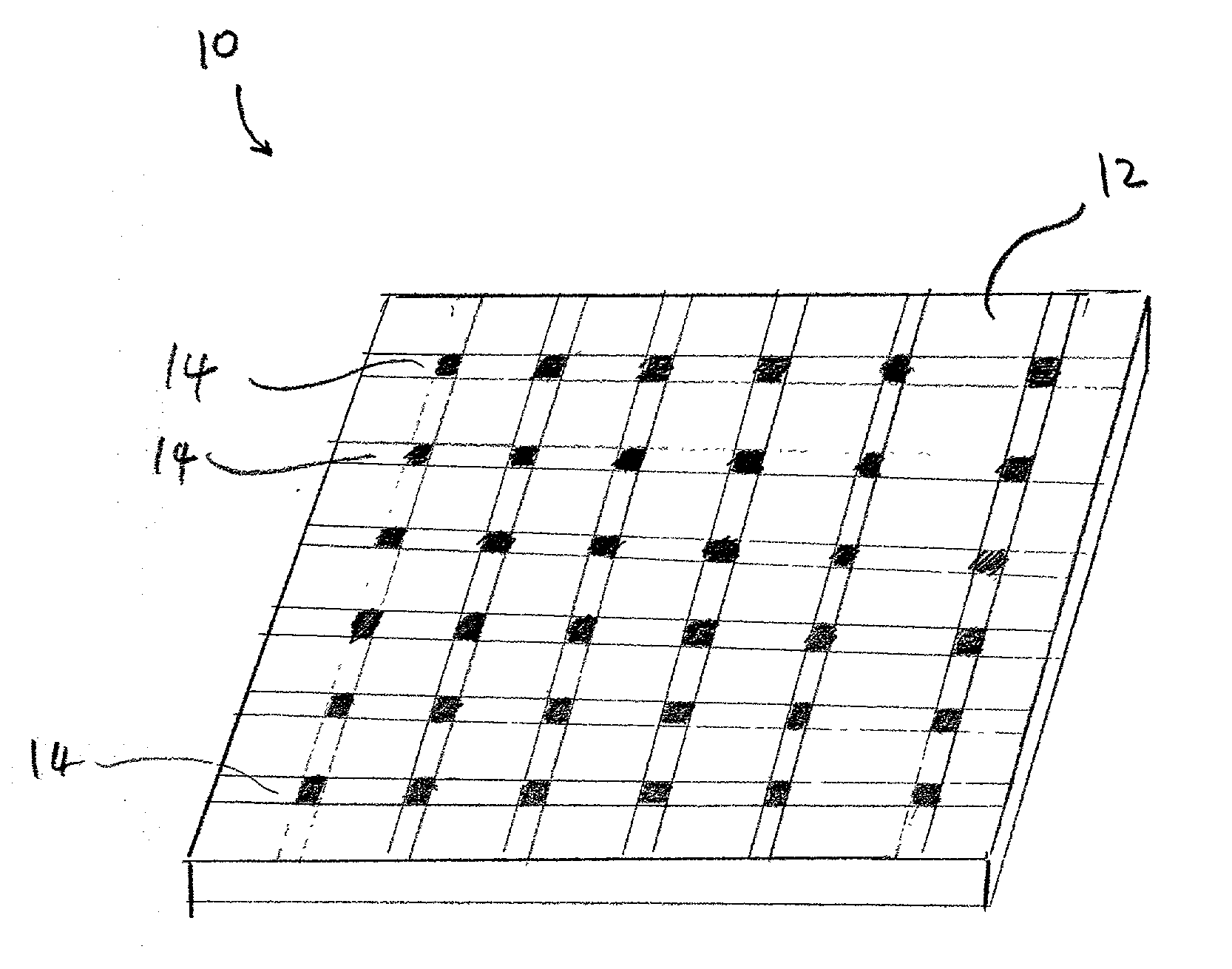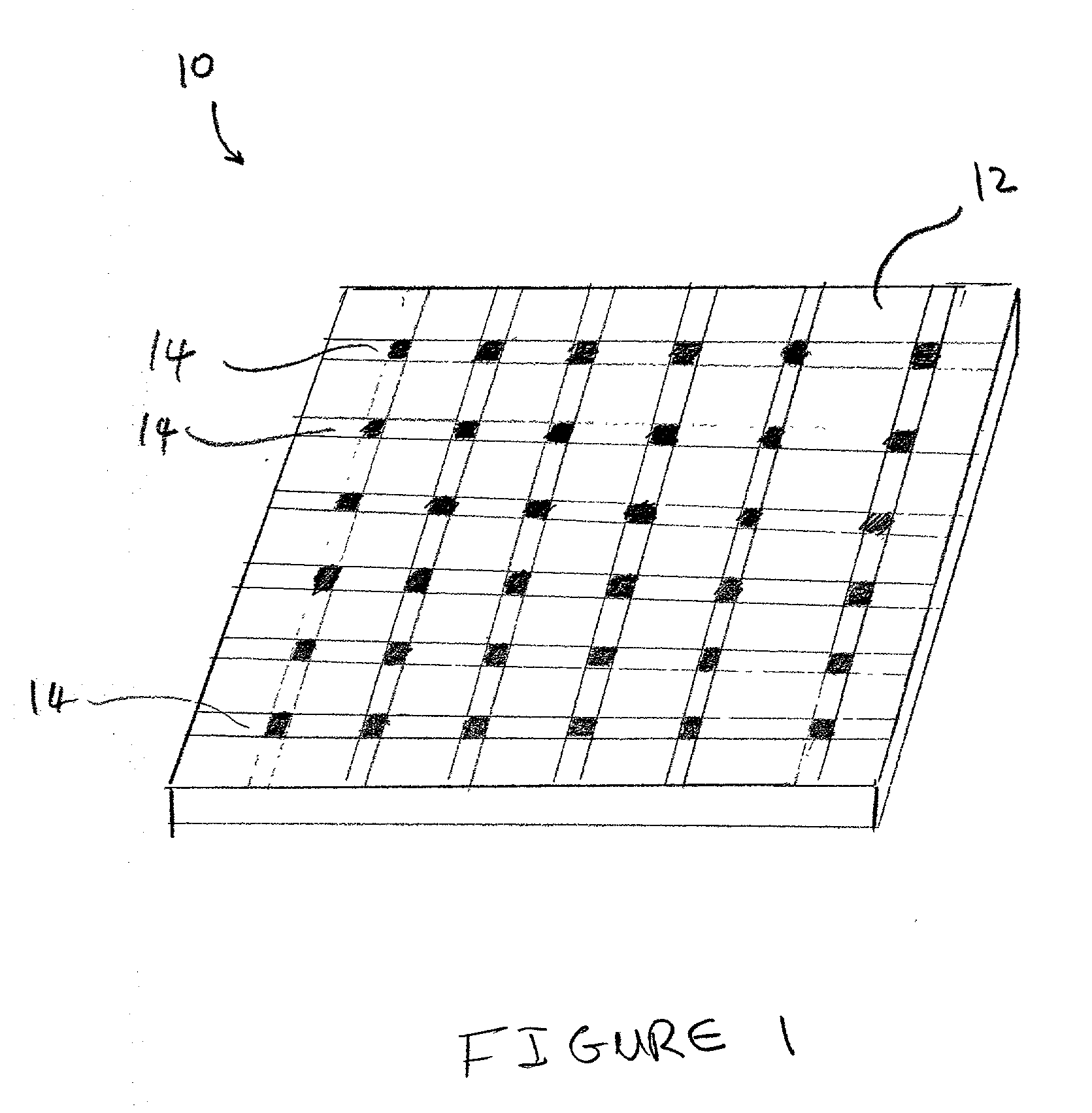Surface activated biochip
- Summary
- Abstract
- Description
- Claims
- Application Information
AI Technical Summary
Benefits of technology
Problems solved by technology
Method used
Image
Examples
Embodiment Construction
[0022]So that the invention may more readily be understood, certain terms are first defined:
[0023]The term “micro-location”, as used herein, refers to a localized area on a substrate surface in which a dose of an ion has been implanted. A micro-location may have any convenient geometrical shape and / or surface topolography, e.g., circular, rectangular, elliptical, wedge-shaped, conical, and the like. Further, a micro-location may be formed as a flat portion of a substrate surface, or alternatively, it can have a three-dimensional structure e.g., a well, a cavity, or depression, raised regions, etches, trenches, or the like.
[0024]The term “surface”, as used herein refers to any material that is rigid or semi-rigid onto, or into which ions can be implanted or deposited using standard ion implantation techniques. Preferably, the surface is substantially flat, although curved surfaces can also be utilized in the present invention. Examples of suitable surfaces include, but are not limite...
PUM
| Property | Measurement | Unit |
|---|---|---|
| Density | aaaaa | aaaaa |
| Semiconductor properties | aaaaa | aaaaa |
Abstract
Description
Claims
Application Information
 Login to View More
Login to View More - R&D
- Intellectual Property
- Life Sciences
- Materials
- Tech Scout
- Unparalleled Data Quality
- Higher Quality Content
- 60% Fewer Hallucinations
Browse by: Latest US Patents, China's latest patents, Technical Efficacy Thesaurus, Application Domain, Technology Topic, Popular Technical Reports.
© 2025 PatSnap. All rights reserved.Legal|Privacy policy|Modern Slavery Act Transparency Statement|Sitemap|About US| Contact US: help@patsnap.com



